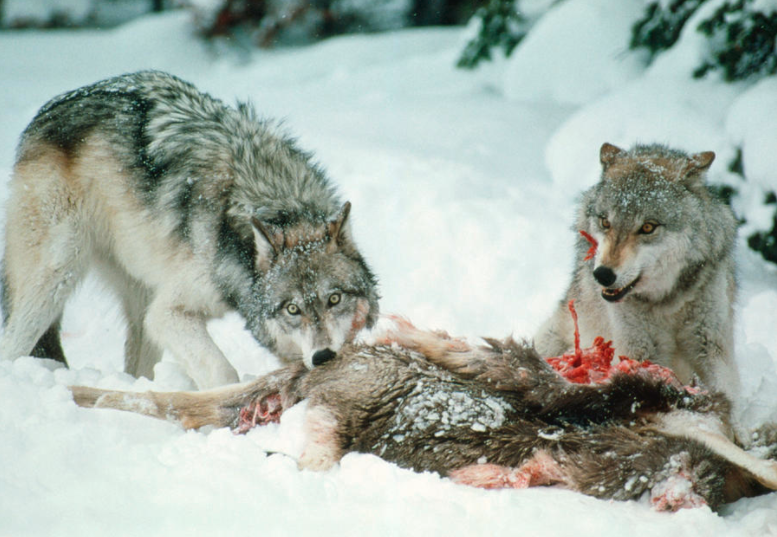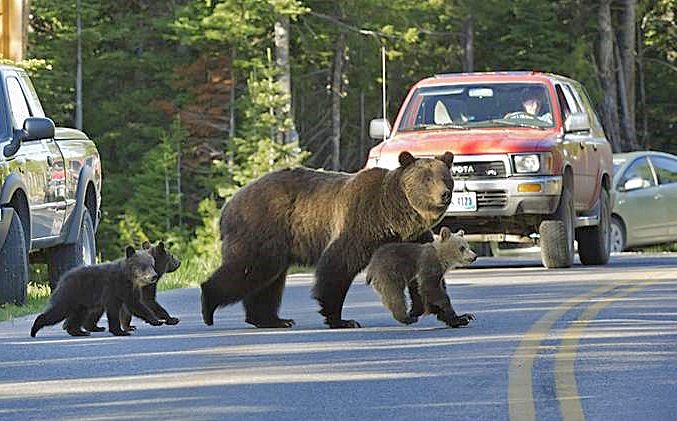from Protect the Harvest
EXTREME ENVIRONMENTALISTS’ DREAM OF “REWILDING” THREATENS RURAL AMERICA
Rewilding Devastates Rural America & Food Production
Protect The Harvest supports meaningful and balanced conservation along with the right to hunt; rewilding, however, is something much different. It is painted in the rosy colors of enhanced conservation to disguise the devastating effects it is already having on portions of rural America, from livestock production to private property rights. The rewilding movement is systematically chipping away at rural living—and more alarmingly, the food production in rural areas that our nation, and the world, rely on.
What Is Rewilding?
The term “rewilding” is innocuously defined by Merriam-Webster as “the planned reintroduction of a plant or animal species, and especially a keystone species or apex predator (such as the gray wolf or lynx) into a habitat from which it has disappeared (as from hunting or habitat destruction) in an effort to increase biodiversity and restore the health of an ecosystem.”
While wild places are certainly necessary and valued by the general population, the core beliefs of the rewilding movement are that:
• Humans are not part of the ecosystem and have no part in nature
• The millions of acres of protected lands already around the globe are insufficient
• Existing protections for apex predators are insufficient
• Even while there are plentiful populations of apex predators like wolves and grizzly bears in other parts of the world, they need to be restored to areas where they roamed over a century ago
• Much of our rural lands should be returned to nature to allow “unrestricted movement among wide ranging animals.”
Preservation of Farmland = Preservation of Mankind
The preservation of already protected lands and species are something that few would argue with. However, as rural agricultural areas increasingly succumb to suburbia, the active and deliberate preservation of farming and ranching lands and the activities upon them is equally, if not more important. This is not to say that the need for wild spaces decreases—but nor does it increase.
As the urban-based rewilding movement flaunts fantasies of an Ice Age renaissance and plans for a continental wildlife park that would cripple rural America, it has been estimated that 6,000 acres of open space are lost in the United States every day to development. Farmlands become suburban neighborhoods, and the space available for food production diminishes bit by bit—while demand for living space increases, so too does the demand for food.
Caught in the middle of this untenable situation, with ever-increasing pressure from both sides, is a substantial portion of our nation’s food production. We simply cannot afford to allow the rewilding movement to hijack our productive rural areas for the sake of their extreme environmentalist visions, especially when the world’s need for food is anticipated to increase by 100% by 2050.
Even today, 1 in 8 people, or 842 million, struggle with hunger every day, and nearly 1 billion people in the world are food insecure, meaning they lack access to a sufficient quantity of affordable, nutritious food.
For extremist environmentalists to actively seek to exacerbate this situation for the sake of their delusional wilderness utopian vision borders on the criminally insane.
The Implementation Plan for Rewilding
Rewilding wears different masks and is being pursued in different ways around the globe, but the core tenets of the movement are as bizarre as they are threatening, and smack of an Orwellian dystopia.
• Introducing apex predators to areas where there are none
• Creation of protected wildways
• Depopulating rural areas
It Is Not a Hollywood Fantasy – The Wildlife Corridors Conservation Act of 2019
In North America, we are seeing the reestablishment of dangerous apex predator populations with increasing attacks on livestock and humans as well as devastation to wild herd animals like elk and deer, and government representatives seeking to mandate rewilding through legislation; on the other side of the globe, reminiscent the movie Jurassic Park, steps are being taken to recreate the Pleistocene era and resurrect wooly mammoths.
While an Ice Age themed park might seem to be a mere whim of an eccentric scientist, the park’s existence demonstrates the mentality and level of commitment of rewilding zealots. Most concerning is the fact that those pushing for rewilding aren’t just fanatical fringe groups, as proven by the introduction of the Wildlife Corridors Conservation Act of 2019 to United States Congress.
Government Officials Embrace Rewilding Alongside Extremist NGOs
From its environmental extremist origins, the concept of rewilding has taken hold and evolved into a worldwide movement being pushed in a number of ways by a variety of interconnected entities, from private NGOs to government officials and agencies.
There is an incredible number of groups supporting rewilding and already implementing it on different levels. We have written about various rewilding efforts several times in the past. Read about the American Prairie Reserve, Wilderness Corridors Act of 2019, and Ventura County, California on our website. These articles offer insight into what rewilding actually means for communities.
Rewilding Relies on Apex Predators & Protected “Wildways”
Rewilding NGOs’ mission is to restore lands to a wilderness state with a focus on large predators such as wolves and grizzly bears serving as “regulators.” Groups like these seek to “advance continental-scale conservation” through the establishment of “protected wildways” for the movement of large carnivores through a “wildlands network.” Releasing apex predators is a first step toward rewilding, and the next step is to impose overreaching rules and regulations to rural areas in order to create the “wildways.” This map offers an example of what this would look like. Please note the “little to no human use” and “highly regulated use” zones.

Rewilding Equals Depopulating
There seems to exist in the rewilding movement a pervasive underlying assumption of guilt for human progress and even existence. Founders of Wildlands Network, Dr. Michael Soule and Dr. Reed Noss, stated in an article that without apex predators being present in wild spaces, “human opportunities to attain humility are reduced.”
In the late 1980s, a pair of eastern urban professors, Drs. Frank and Deborah Popper, proposed the Buffalo Commons. Their plan was very similar to what American Prairie Reserve is doing now.
According to a March 2019 Mountain Journal article by Shawn Regan, the Poppers believed that “the plan would…rectify the past wrongs of the homesteading era that caused so much of this great land to be plowed under and developed. Settlement of the region, they wrote, was the largest and longest-running agricultural and environmental miscalculation in American history.” They proposed that the region be “returned to its original pre-white state” and “in effect, deprivatized.” Buffalo would roam free across the plains, which, according to the Popper’s vision, would “become almost totally depopulated over the next generation.”
Introduction of Apex Predators is Already Harming Rural Areas
Even without continental-scale “protected wildways” in place in North America, the introduction and protection of apex predators in various areas is already demonstrating the early effects of rewilding all too well. The presence of wolves, grizzlies, and mountain lions is already drastically affecting livestock producers and crop farmers, as well as rural living and recreation. The addition of mandated “corridors” as in the Wildlife Corridors Act creates only loss of private property rights and ability to defend livestock, crops, and property— is this a step toward eminent domain being exercised for wildlife? There are several prominent examples of the effects of introduced predators on rural areas, that plainly illustrate what is just the proverbial tip of the rewilding iceberg.
Continue reading here



